- Canadian Dividend Investing
- Posts
- How to Retire in 15 Years Using Dividend Growth Stocks
How to Retire in 15 Years Using Dividend Growth Stocks
A roadmap to early retirement using dividend growth stocks
Whenever I talk about the advantages of dividend investing, I often get two pieces of “feedback”.
The first is that dividend stocks have lagged some other asset class for the last 1/3/5/10 years. The competing investment could be anything from Bitcoin (or some other crypto “asset”) to growth stocks to gold. It all depends on what the other person is into.
The second common argument I get against the strategy is that it’s impossible for folks to retire early on dividends alone. It’s hard to sock money away with kids, aging parents, inflated grocery costs, and expensive real estate.
Some react to this setback by swinging for the proverbial fences, using risky moves like excessive leverage, aggressive options strategies, or going all-in on the most volatile part of the market. These strategies work until they don’t, and when they fail they fail badly.
Another excuse to share my favourite graphic? Don’t mind if I do.
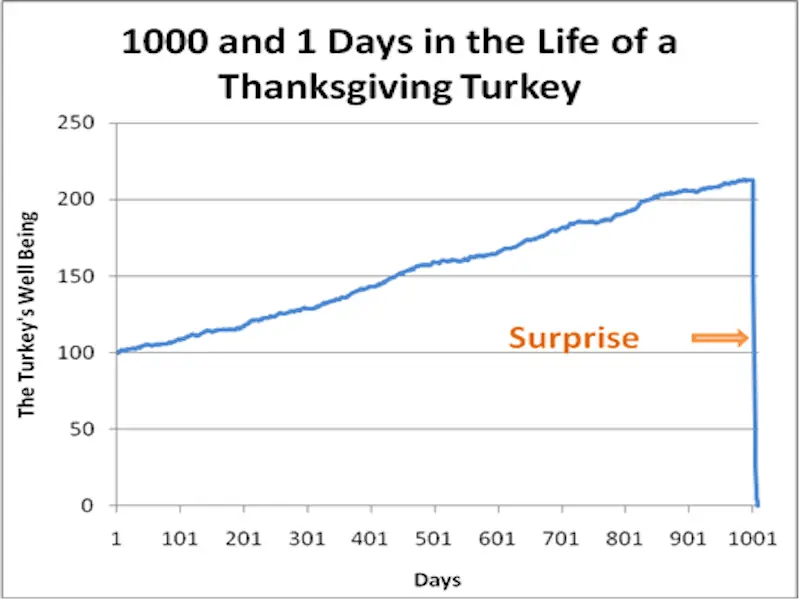
A big reason why I’m a dividend investor is it’s a strategy that tends to work pretty well in bull markets, yet offers decent protection in bear markets as investors flee riskier assets in favour of safer ones. I’m happy to give up a little upside in such a scenario.
In other words, dividend investing is a good enough strategy, which is actually quite valuable in a world where so many people chase what’s performed well lately. It’s the consistency that’s the valuable part.
Anyway, this post is for the naysayers who say that it’s impossible for anyone to retire on dividends. I’ll show y’all just how it can be done, and in less time than you think, too. Just a decade and a half of consistent saving and decent investing, and you too can create a pretty spectacular dividend growth portfolio.
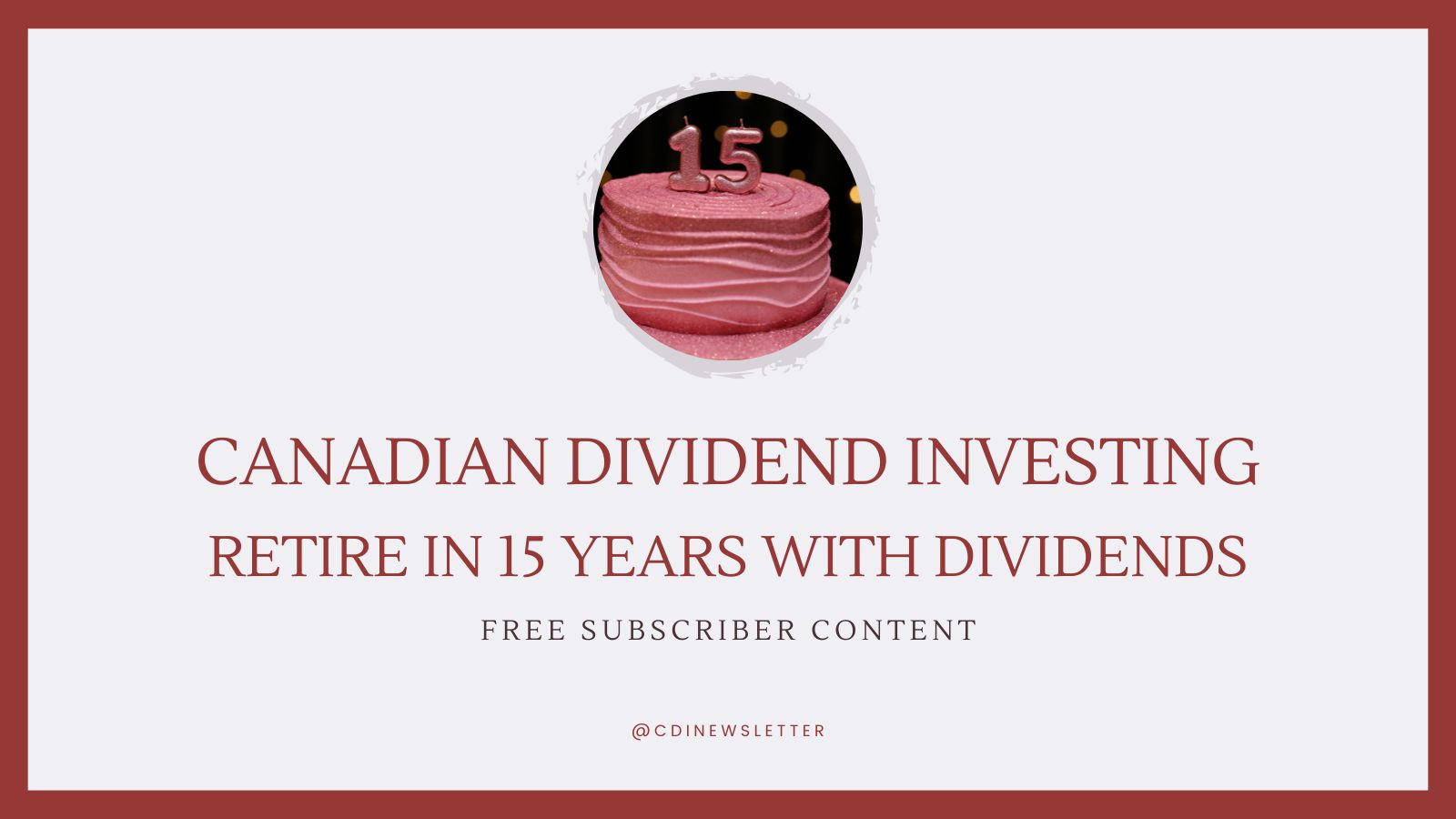
Scenario 1: 50, $250k in assets
Let’s look at a few different scenarios.
The first is Lou. Lou doesn’t exist, but that’s not going to stop us from giving him a back story. He just turned 50 and has accumulated a liquid net worth of $250k. He also has a paid off house, so he can save a decent amount of his $100k salary.
Lou takes the money and invests a lump sum of $250k on his 50th birthday. He’s able to funnel the $2,000 per month he was previously paying on his mortgage into stocks, with an additional $1,000 per month in savings he was putting aside before. That gives us $36,000 per year in additional contributions.
We’ll assume Lou’s portfolio is going to generate a 10.9% annual return. I know I’ll get some pushback for this, but let me explain. According to research by Royal Bank, Canadian dividend growth stocks have returned an average of 10.9% annually from 1986 through 2024. This is much better than the performance of the TSX Composite as a whole.
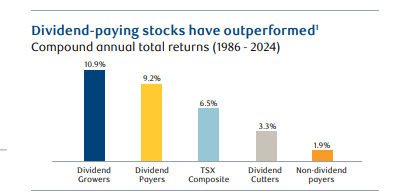
We’ll assume Lou’s portfolio has a yield of 3.5%, which is quite achievable, and that he’s automatically reinvesting dividends. So, at the beginning of the whole exercise, Lou’s portfolio would generate $8,750 annually in dividends.
At the end of the 15 years, Lou’s portfolio is worth an eye-popping $2.5M. Nice work, Lou.
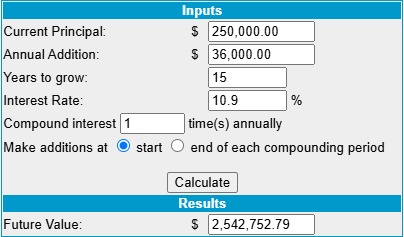
Now, before Lou drowns an entire baseball clubhouse in beer celebrating his good work (topical!), we have to make a little adjustment on the income side. A portfolio yielding 3.5% probably isn’t going to grow by nearly 11% per year. So we’ll adjust and say that it grows by 7.4% per year.
(The reason I used 7.4% as a growth rate is generally a dividend portfolio’s total return will track the starting yield plus the dividend growth rate. Dividend growth generally matches earnings growth over the long-term, which is what really drives returns. So if we know the total return, and we know the starting yield, the only missing variable is expected dividend growth)
I think Lou is going to be pretty happy with his dividend income if he goes down this path. If, y’know, he existed. His passive income grows to nearly $89,000 per year when he’s ready for retirement.
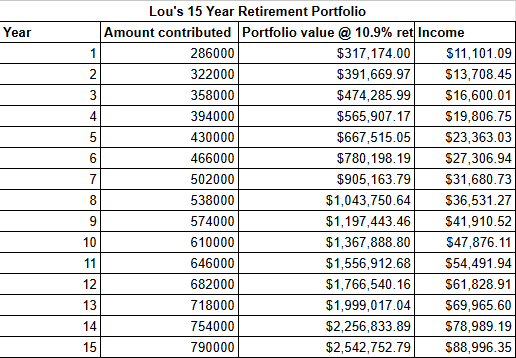
Ultimately, a lot of this comes down to what you spend. If Lou had an expensive lifestyle and was dropping cash on nice cars, multiple overseas vacations, or other pricey habits, his $52,000 per year dividend income isn’t going to get him very far. Even if we include CPP/OAS.
Intermission
More Nelly for your eyeballs and earholes? You got it.
This week on the DIY Wealth Canada Pod, Bob and I discuss one of my biggest pet peeves: how folks who invest in covered call funds (which often feature leverage as an additional bonus) will claim such an exercise is dividend investing.
I strongly disagree, and this week’s pod addresses that. Warning: I do get a little rant-y in this one.
I’ve been fired from the Moose on the Loose pod for sheer incompetence… or maybe Mike is doing a home reno and didn’t want to try and record over the pounding and the banging. Probably that second thing, actually.
We should be back at it next week.
Scenario 2: 30, $0 in assets
Let’s replace Lou with his pal Eddie this time around.
Eddie is 30 and is single. He has just gotten a nice raise to $90,000 per year, but the grind is starting to get to him. He wants to retire at 45 with enough income to generate $50,000 per year.
Eddie decides he wants a little more yield today, so he invests in the more higher yield dividend universe. He achieves a 4.5% yield, but gives up a little bit on the growth side. The income only grows by 5% per year.
Rather than looking at total return, let’s just focus more on the income part of the equation. How much does Eddie need to invest to reach his $50k goal in just 15 years?
After 15 years, Eddie will have a portfolio that generates him more than $52,000 per year and has a $1M+ portfolio. That’s easily enough to reach his retirement goal, plus the income should grow a little faster than his overall spending, too.
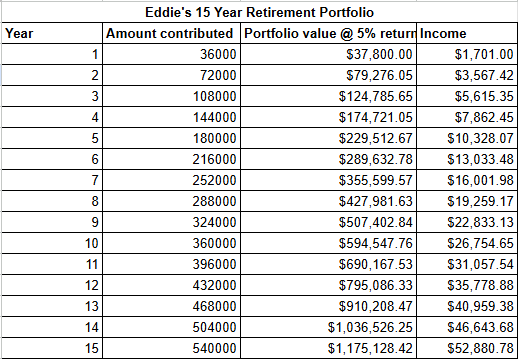
Scenario 3: Start and then stop
For our next scenario, let’s meet Clancy. He’s a co-worker of Lou and Eddie’s who has just graduated from college, and he wants to eventually retire on dividend stocks.
He’s heard that you get a huge boost by investing as quickly as possible, so he decides on a path. He’s going to invest $20,000 per year in dividend growth stocks yielding 3.5% and that grow the payout by 7.4% per year.
But once he’s done his 15 years, he’s going to stop and let compounding do the rest. He aims to retire for good at 50.
By the time Clancy hits 37 (starting at 23), he has a portfolio worth $757k that generates dividend income of more than $26k annually. A great start, but probably not enough to retire on.
At that point the heavy lifting is done, and Clancy can cruise. He can rest on his laurels and allow the portfolio to grow. By the time he’s 50 it should be worth $2.9M and generate a six-figure dividend income.
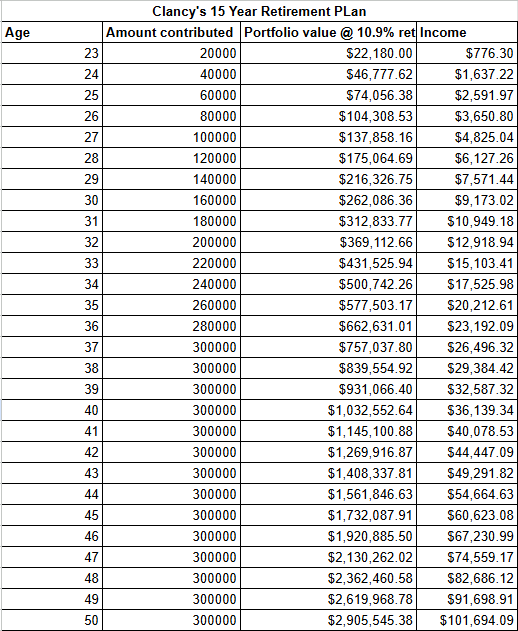
But Nelson. What stocks should I use?
I know why y’all are here. You want the list of stocks that I’d use to build such a portfolio and you want it now, dagnabbit.
Sorry, but it’s not going to be that easy. Rather than giving you guys the answer and the ability to feed yourselves today, the point of this newsletter is to teach you to fish so you can feed yourself over a lifetime.
Here’s a quick overview of how I invest. Look for the much more detailed version of it in a few weeks.
Firstly, use screeners or accumulate a list of stocks that have the characteristics you’re looking for. In this scenario, you want:
A list of stocks with strong dividend growth
That also pay decent yields today
With good financial metrics
And obvious moats
To maximize your chances of success
Ultimately, I’m looking to buy good businesses that also happen to grow their dividends.
I like to be patient and buy these stocks when they’re low, either at or close to a 52-week low. But you don’t have to, and I’m not sure someone just starting out today has that luxury.
For example, a few stocks that check off these boxes today might include the Canadian banks, Canadian life insurance companies, Canadian utilities, and healthy smattering of U.S. and international stocks. Trust me; there are plenty of potential choices.
Hint: check out the holdings of dividend ETFs like the Vanguard Canadian High Dividend ETF (TSX:VDY) or the granddaddy of all dividend ETFs, Schwab’s SCHD. Investigate any that seem interesting.
Once you’ve decided on the members of your dividend growth club, it’s important to let compounding do its magic. Don’t just kick a business out of the portfolio because it stumbles a bit. That’s often the worst time to hit the sell button.
From there it’s just a matter of execution. You have to put money to work month after month and year after year when you’d rather be spending that cash frivolously on Pokemon stickers and random gifts for the author of this newsletter.
The plan is simple. Hell, you can even outsource the whole thing to ETF managers for a very reasonable fee. The hard part is putting one foot in front of the other for years until you start seeing real progress.
The bottom line
With a decent savings rate and a reasonable portfolio strategy, it isn’t that hard to build a portfolio of dividend growers that will let you retire in 15 years.
I bet many of you reading are capable of such a thing. Provided you haven’t already done it, of course.
The best part? As long as you keep up that aggressive savings rate, you can build this portfolio in a tax-efficient way. Canadian dividends are taxed ridiculously well when they’re your only source of income. They’re still taxed pretty well on top of your regular income, too.
I keep hearing about how badly taxed dividends are if you're working, but it's just not true.
Say a Canadian makes $100k. The average tax rate on their next $1 of income is 32.9%. But if the next dollar is dividends, that average tax rate falls to 11.1%.
Much better taxed
— Canadian Dividend Investing (@CDInewsletter)
11:07 AM • Oct 21, 2025
This is such a great deal I’m not sure why everyone doesn’t do it. Just 15 years of sacrifice sets up your family for the rest of your life… and even the rest of their lives if they play their cards right.
Whether you use that dividend cash for generational wealth or something much more selfish like your early retirement, having that extra income stream sure beats not having it.